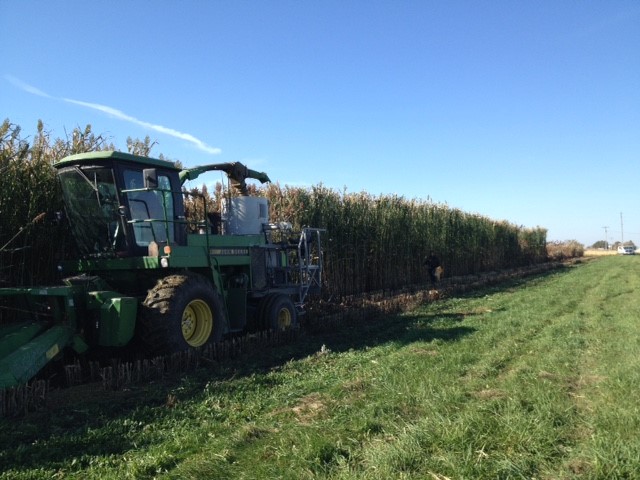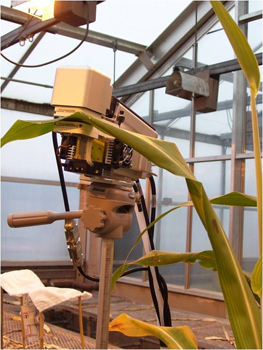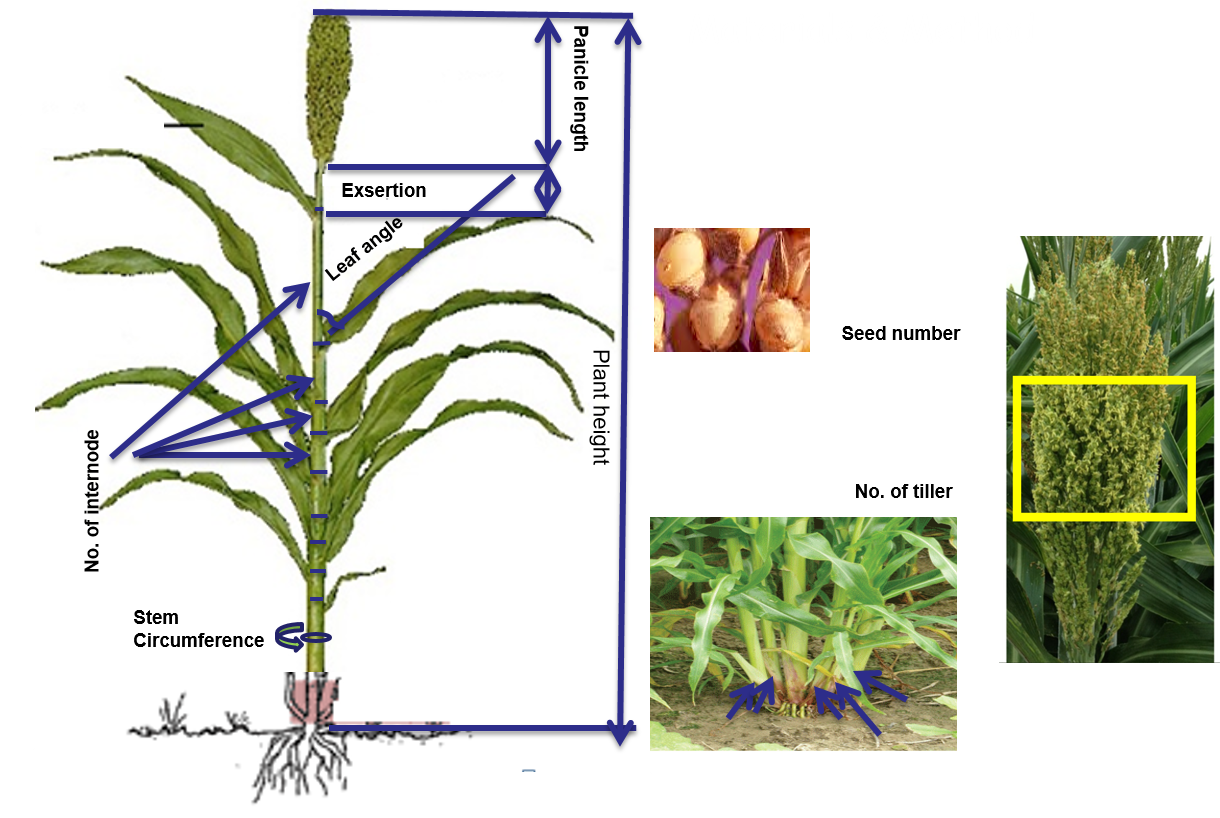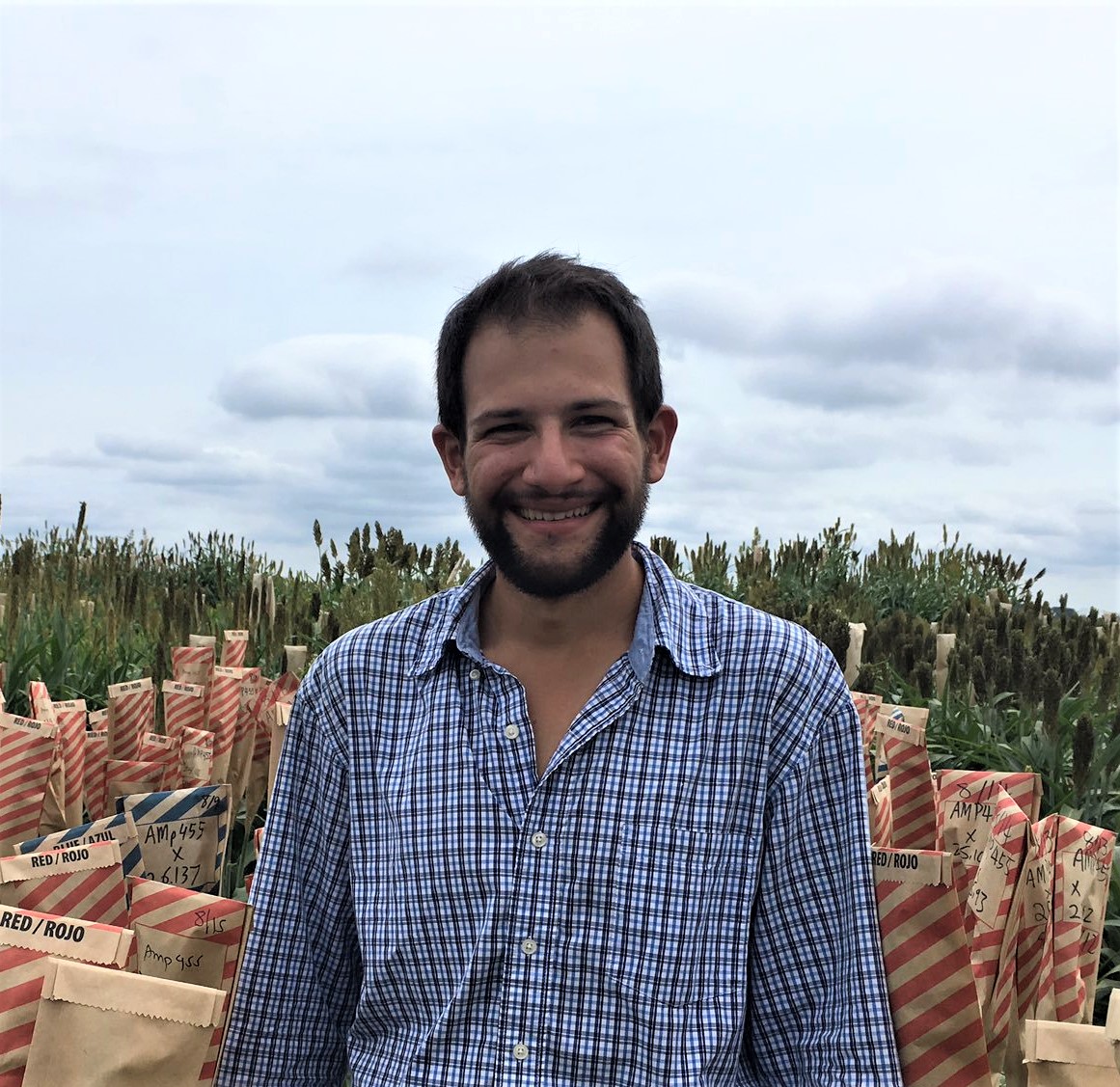About
Maria Salas Fernandez is an Associate Professor in the Department of Agronomy at Iowa State University (ISU). She received a B.S. in Agricultural Production Engineering from the Argentine Catholic University, an M.S. in Plant Physiology from Texas A&M University, and a Ph.D. in Plant Breeding and Genetics from Cornell University. Before her appointment in the academia, she worked in the private sector in Argentina, at the R&D Department of American Cyanamid Company and as a sorghum breeder junior at Nidera SA. She initiated and leads a sorghum field breeding program at ISU to develop germplasm for forage and biofuel production adapted to the Midwest. Her research program is also focused on the use of genomics and high-throughput phenotyping technology to identify genetic mechanisms controlling traits such as plant architecture, photosynthesis, photoprotection and cold tolerance at germination. Dr. Salas Fernandez is a member of the R. F. Baker Center for Plant Breeding at Iowa State University and has been selected as a Plant Sciences Institute Scholar for Predictive Phenomics at ISU.
Awards:
- 2013 American Society of Agronomy (ASA) Early Career Professional Award
- 2014 National Association of Plant Breeders (NAPB) Early Career Award
- NSF CAREER grant for her novel research in photosynthesis and photoprotection
- 2018 Baker Agronomic Excellence Award (ISU)
People
Publications
Google Scholar
Xiang L, Bao Y, Tang L, Ortiz D, M.G. Salas-Fernandez. (2019). Automated morphological traits extraction for sorghum plants via 3D point cloud data analysis. Computers and Electronics in Agriculture 162: 951-961.
Zhou Y., S. Srinivasan, S.V. Mirnezami, A. Kusmec, Q. Fu, L. Attigala, M.G. Salas Fernandez, B. Ganapathysubramanian, and P.S. Schnable. (2019). Genome-wide association study for sorghum panicle architecture using semi-automated, high-throughput feature extraction from RGB images. Plant Physiology 179 (1): 24-37. DOI: 10.1104/pp.18.00974 .
Bao Y., L. Tang, M. Breitzman, M.G. Salas Fernandez, and P.S. Schnable. (2019). In-field robotic phenotyping of sorghum plant architecture using stereo vision. J. Field Robotics 35: 397– 415. https://doi.org/10.1002/rob.21830
Ortiz, D., A. Litvin, and M.G. Salas Fernandez. (2018). A low-cost automated irrigation system for precise high-throughput phenotyping in drought stress studies. PLoS ONE 13 (6): e0198546. https://doi.org/10.1371/journal.pone.0198546
Mantilla Perez, M.B. and M.G. Salas Fernandez. (2017). Differential manipulation of leaf angle throughout the canopy: current status and prospects. (Darwin Reviews). J. Exp. Bot. 68 (21-22): 5699-5717. https://doi.org/10.1093/jxb/erx378.
Roby, M., M.G. Salas Fernandez, E.A. Heaton, F. Miguez, and A. VanLoocke. (2017). Biomass sorghum and maize have similar water-use efficiency under non-drought conditions in the rain-fed Midwest U.S. Agriculural and Forest Meteorology Journal 247: 434-444. https://doi.org/10.1016/j.agrformet.2017.08.019.
Ortiz, D., J. Hu and M.G. Salas Fernandez. (2017). Genetic architecture of photosynthesis in Sorghum bicolor under non-stress and cold stress conditions. J. Exp. Bot. 68(16):4545-4557. https://doi.org/10.1093/jxb/erx276.
Salas Fernandez, M.G., Y. Bao, L. Tang, P.S. Schnable. (2017). A high-throughput field-based phenotyping technology for tall biomass crops. Plant Physiology 174 (4): 2008-2022. DOI: 10.1104/pp.17.00707.
Zhao, J., M.B. Mantilla Perez, J. Hu, and M.G. Salas Fernandez. (2016). Genome-wide association study for nine plant architecture traits in Sorghum bicolor. The Plant Genome 9 (2): 1-14. doi:10.3835/plantgenome2015.06.0044.
Li, L., W. Zheng, Y. Zhu, H. Ye, B. Tang, Z.W. Arendsee, D. Jones, R. Li, D. Ortiz, X. Zhao, C. Du, D. Nettleton, M.P. Scott, M.G. Salas-Fernandez, Y. Yin, and E.S. Wurtele. (2015). QQS orphan gene regulates carbon and nitrogen partitioning across species via NF-YC interactions. Proc. Natl. Acad. Sci. USA 112(47):14734-14739.
Salas Fernandez, M.G., K. Strand, M. Hamblin, M. Westgate, E. Heaton, and S. Kresovich. (2015). Genetic analysis and phenotypic characterization of leaf photosynthetic capacity in a sorghum diversity panel. Genet. Resour. Crop Evol. 62:939-950.
Matilla Perez, M.B., J. Zhao, Y. Yin, J. Hu, and M.G. Salas Fernandez. (2014). Association mapping of brassinosteroid candidate genes and plant architecture in a diverse panel of Sorghum bicolor. Theor. Appl. Genet. 127(12):2645-2662.
Salas Fernandez, M.G., G. Schoenbaum, and S. Goggi. (2014). Novel germplasm and screening methods for early cold tolerance in sorghum. Crop Sci. 54(6):2631-2638.
Salas Fernandez, M.G., J. Okeno, E. Mutegi, A. Fessehaie, and S. Chalfant. (2014). Assessment of genetic diversity among sorghum landraces and their wild/weedy relatives in western Kenya using simple sequence repeat (SSR) markers. Conserv. Genet. 15:1269-1280.
Salas Fernandez, M.G. (2011). Sorghum: an alternative biomass feedstock for ethanol production in the Midwest. Aspects of Applied Biology 112: 93-98. Biomass and Energy Crops IV Conference. Urbana/Champaign, Illinois, USA.
Yan, J., Bermudez Kandianis, C., Harjes, C.E., Bai, L., Kim, E., Yang, X., Skinner, D., Fu, Z., Mitchell, S., Qing, L., Salas Fernandez, M.G., Zaharieva, M., Babu, R., Fu, Y., Palacios, N., Li, J., Dellapenna, D., Brutnell, T., Buckler, E.S., Warburton, M.L., Rocheford, T. (2010). Rare Genetic Variation at CrtR-B1 Increases β-carotene in Maize Grain. Nature Genetics 42(4): 322-327.
Salas Fernandez, M.G., P.W. Becraft, Y. Yin and T. Lübberstedt. (2009). From dwarves to giants: plant height manipulation for biomass yield. Trends Plant Sci. 14 (8): 454-461.
Salas Fernandez, M.G., I. Kapran, S. Souley, M. Abdou, I. H. Maiga, C. Acharya, M. T. Hamblin, and S. Kresovich. (2009). Collection and characterization of yellow endosperm sorghums from West Africa for biofortification. Genet. Resour. Crop Evol. 56: 991-1000.
Salas Fernandez, M.G., M.T. Hamblin, L. Li, W.L. Rooney, M.R. Tuinstra, and S. Kresovich. 2008. QTL analysis of endosperm color and carotenoid content in sorghum grain. Crop Sci. 48:1732-1743.
Hamblin, M.T., M.G. Salas Fernandez, M.R. Tuinstra, W.L. Rooney, and S. Kresovich 2007. Sequence variation at candidate loci in the starch metabolism pathway in Sorghum bicolor: prospects for linkage disequilibrium mapping. The Plant Genome S2: S125-S134.
Hamblin, M.T., M.G. Salas Fernandez, A.M. Casa, S.E. Mitchell, A.H. Paterson, and S. Kresovich. 2005. Equilibrium processes cannot explain high levels of short- and medium-range linkage disequilibrium in the domesticated grass Sorghum bicolor. Genetics 171: 1247-1256.
Salas, M.G., S. H. Park, M. Srivatanakul, and R.H. Smith. 2001. Temperature influence on stable T-DNA integration in plant cells. Plant Cell Rep. 20:701-705.
Srivatanakul, M., S.H. Park, M.G. Salas, and R.H. Smith. 2001. Transformation parameters enhancing T-DNA expression in kenaf (Hibiscus cannabinus). J. Plant Physiol. 158:255-260.
Park, S.H., B.M. Lee, M.G. Salas, M. Srivatanakul, and R.H. Smith. 2000. Shorter T-DNA or additional virulence genes improve Agrobacterium-mediated transformation. Theor. Appl. Genet. 101:1015-1020.
Srivatanakul, M., S.H. Park, J.R. Sanders, M.G. Salas, and R.H. Smith. 2000. Multiple shoot regeneration of kenaf (Hibiscus cannabinus L.) from a shoot apex culture system. Plant Cell Reports 19:1165-1170.
Srivatanakul, M., S.H. Park, M.G. Salas, and R.H. Smith. 2000. Additional virulence genes influence transgene expression: transgene copy number, integration pattern and expression. J. Plant Physiol. 157:685-690.
Zapata, C., M. Srivatanakul, S.H. Park, B.M. Lee, M.G. Salas, and R.H. Smith. 1999. Improvements in shoot apex regeneration of two fiber crops: cotton and kenaf. Plant Cell, Tissue and Organ Culture 56: 185-191.







